Sailors use knives to begin cutting as fast as possible
CYC Mackinac racers break masts in darkness
A fast-moving summer storm on Lake Michigan left carnage in its path after three huge sailboats snapped masts and a fourth boat had to rescue a man after he fell overboard, all in the middle of the night under total darkness during the first day of Chicago to Mackinac race.
“It was about 11:30 eastern time (Saturday) and we outpaced a couple storms. The team was getting ready … when a squall hit us. The wind picked up from about 18 knots to over 30 knots and shifted 80 degrees,” Skip Dieball, 53, of Wilmette, Illinois, a tactician racing on the 52-foot Usual Suspects, said on Sunday. “Sometimes in the daytime, you can see some of the shifts coming, the wind pattern on the water. But it was so dark we couldn’t see anything. We told each other we would prepare early. We were, and it just came really fast.”
Disaster was averted after Madcap, a Santa Cruz 52 owned and skippered by John Hoskins, responded to a man overboard report from Callisto, a J/125 owned and skippered by Jim Murray. Both boats resumed racing the 333 statute mile (289 nautical mile) race without injury.
In addition to Usual Suspects, owned by Eric Wynsma, masts broke on the 65-foot Sagamore owned by Laura and Tone Martin, along with the 45-foot Sapphire, owned by Robert Radway. No injuries were reported, according to Laura Muma, communications director for Chicago to Mackinac race.
Despite being on high alert to take down sails, the de-masting events were intense.
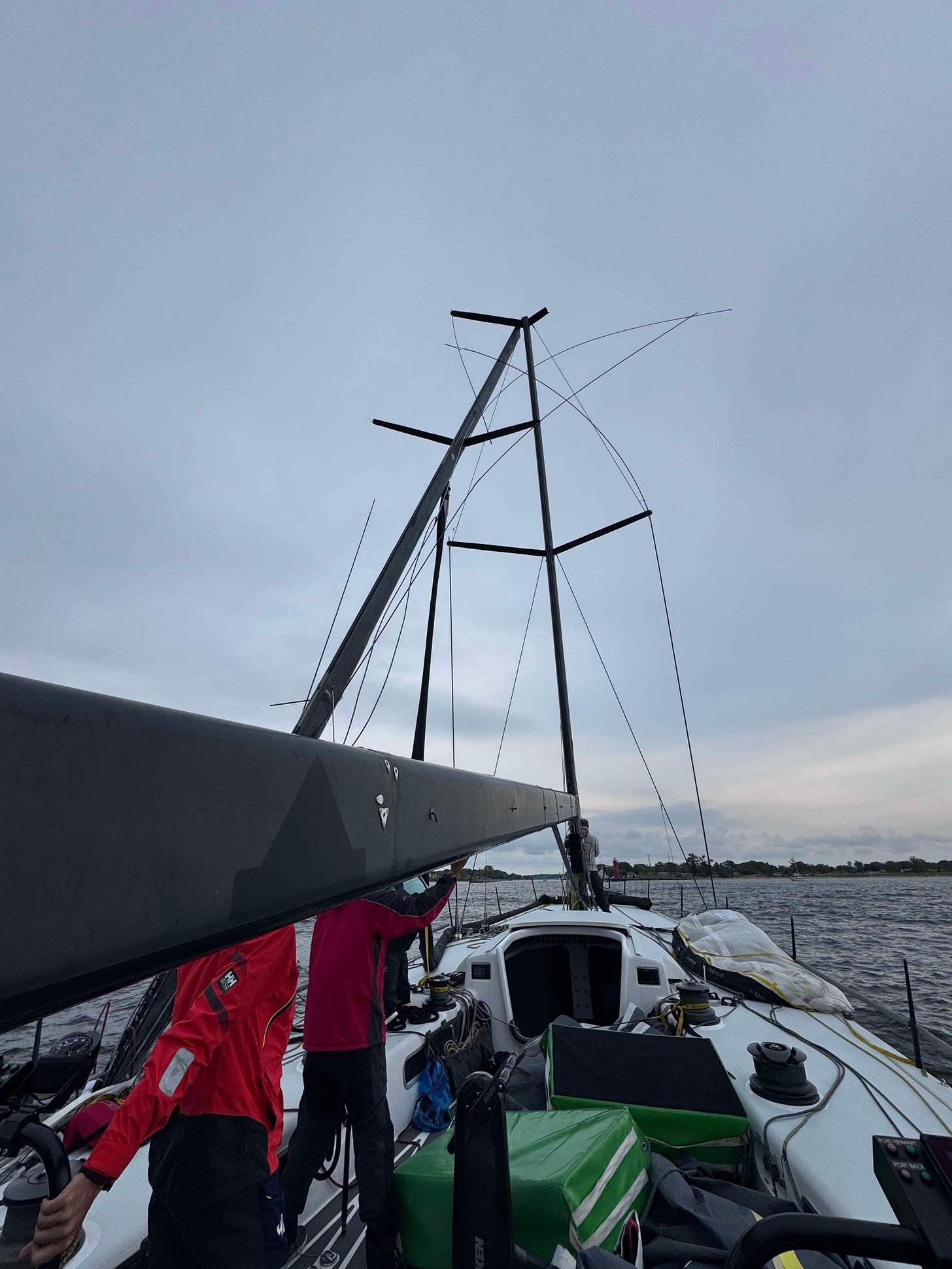
‘Loud as the loudest thunder’
As soon as the mast snapped, Dieball said the crew started doing a head count to be certain all 13 sailors were still on board no one was lost in the water. The rig could have come down on the crew if they had been in their normal stations but they were scattered. While the mast “broke violently,” Dieball said, “it did not come down violently.”
The race boat with its custom carbon fiber mast, strong and light but brittle, is designed for high-performance racing and often used in America’s Cup races.
When the mast broke, it sounded like a “crack of thunder” immediately overhead, Dieball said. “It’s as loud as the loudest thunder.”
When the mast settled, the crew had to rapidly assess next steps. The biggest fear is that the broken mast will bang against the boat and puncture a hole, Dieball said. A mast on a boat that size can be 60- or 70 -feet tall, he said.
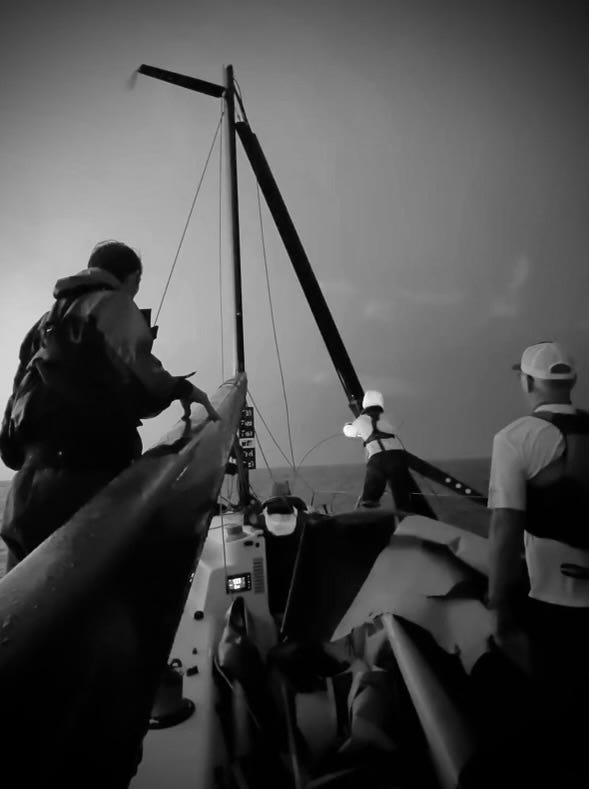
“Part of your safety equipment is having cutting devices that get the mast away from the boat. The mast had broken in three different spots and it was time to start cutting things away,” Dieball said. “Carbon fiber, in many ways, is sharper than steel. We had to make sure no one was in a spot where one of the pieces would actually cut them.”
So sailors took out cutting tools and knives they’re required to carry on their bodies as part of the racing protocol — and sliced away rigging as fast as possible, letting material sink into the water.
‘Survival mode’
Skipper Eric Wynsma, a real estate developer from Grand Rapids, Michigan had three of his grown kids racing, too. This was his 25th Chicago to Mackinac race.
“We were just in survival mode,” Dieball said, cutting away for about 30 minutes. “After the (storm) cell went through, the wind died off. So it wasn’t like we were battling elements. We were into the race about nine hours, finishing about a third of the course, and we returned to Muskegon.”
He provided a 4-second video of the pitch black night just before the mast failure, captured by Usual Suspects crew member Peter Houlihan, seen below:
After stabilizing the situation, the Usual Suspects crew contacted the U.S. Coast Guard and reported debris in the water. The race boat didn’t need assistance once the rigging was cut away, Dieball said. They made certain nothing was wrapped around the propeller and Usual Suspects spent the next three hours motoring back, arriving around 5 a.m.
No one was freaking out, Dieball said. “It was all business.”
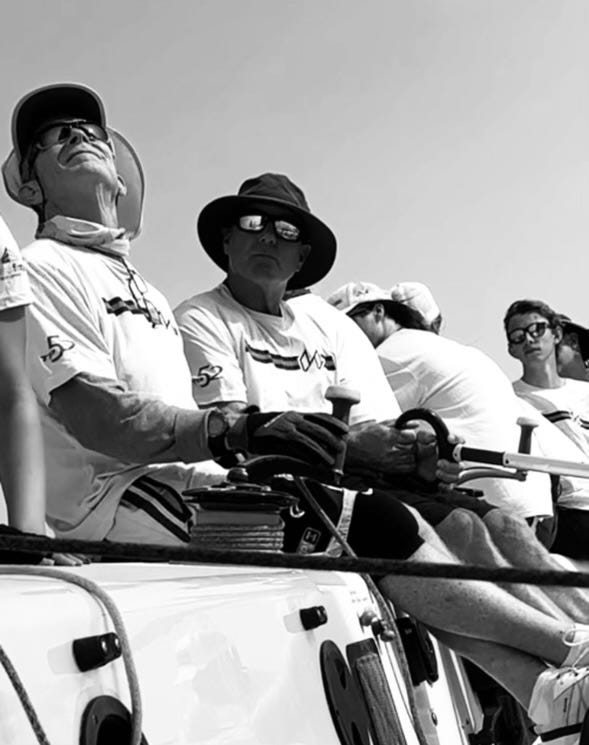
The costly damage prevents Usual Suspects from racing the Bayview Mackinac race from Port Huron to Mackinac on Saturday, July 20.
The tracking device that each boat is required to carry, that allows family and friends to follow race progress in real time, hasn’t been returned by Usual Suspects yet. Dieball ended up getting a ride from Muskegon and just heading south instead of back to Chicago. His tracker shows Usual Suspects is way off track, now in Grosse Ile, Michigan.
Fast Tango fights DeTour
Tim Prophit of St. Clair Shores, Michigan, owner and skipper of the 40-foot Fast Tango, didn’t get slammed by the storm but his nine-member crew prepared by making sail changes and reefing the main sail for better control.
“All of a sudden, the waves felt different, a different pattern, a different height. And the temps dropped,” he said Sunday while racing. “We were paying very close attention to the weather.”
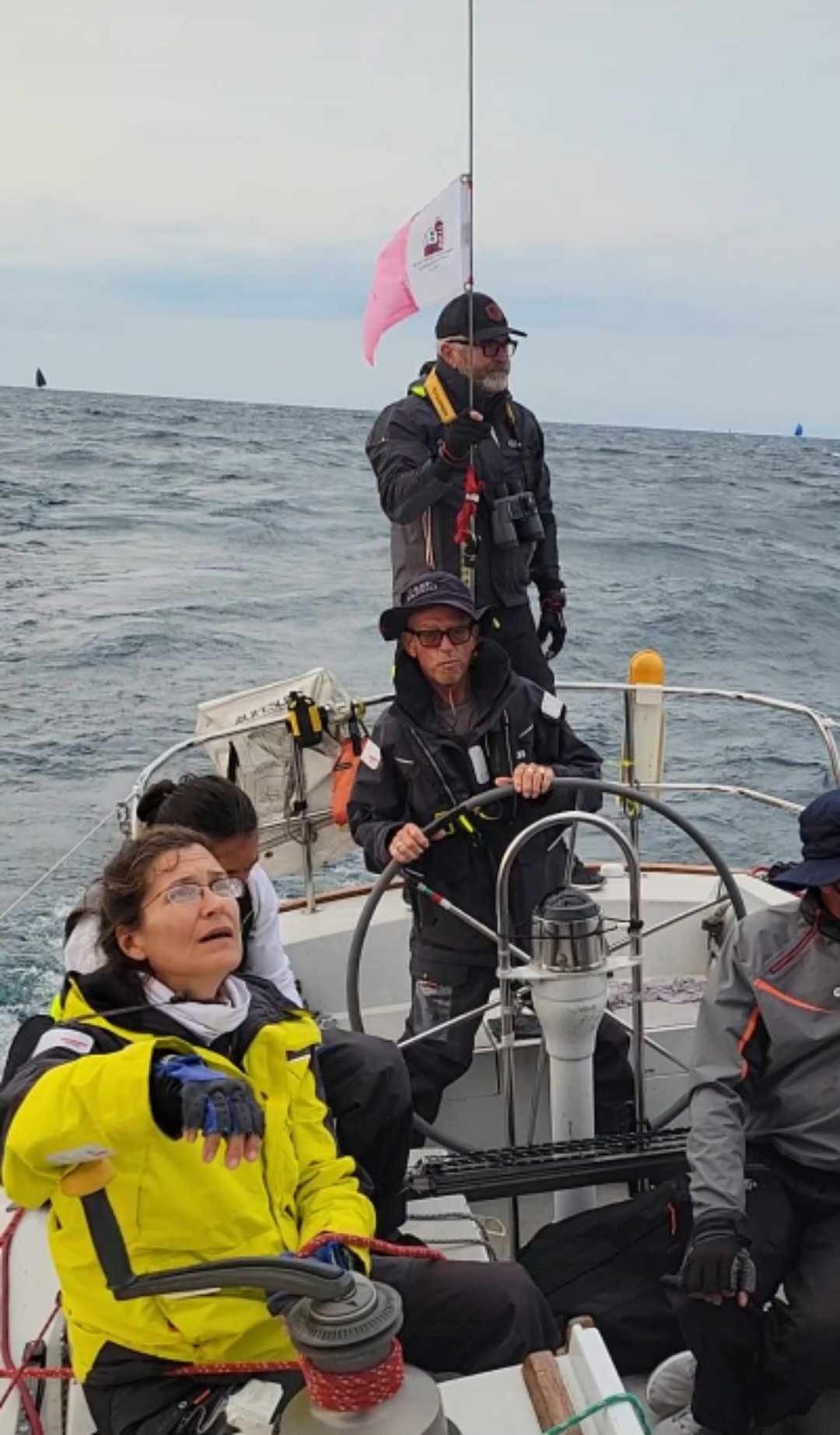
Fast Tango won its class and placed second overall in the Chicago to Mackinac race last year, and was the overall winner in the Port Huron to Mackinac race.
This year, Fast Tango is battling the 34-foot DeTour, owned by Chuck Stormes of Grosse Pointe Farms, Michigan, no stranger to winning class and overall trophies.
Christy Storms said early Sunday afternoon she couldn’t look at the tracker to see how her husband was doing. It made her crazy. She didn’t know there had been a storm, she said, thank God, or she would have been worried sick.
“This is the first year I’ve been trying to not stalk him,” she said. “It’s tough looking every minute. It just makes me crazy.”
Family members are known to sleep with their phones under their pillows, call and text each other every hour through the night until the race is finished.
In years past, Christy said, “it was like crack. It just make me so anxious.”
So, she went online, noticed he was doing great, took a snapshot of the tracker, put her phone down and went to bed with their 11-year-old dog Striker.
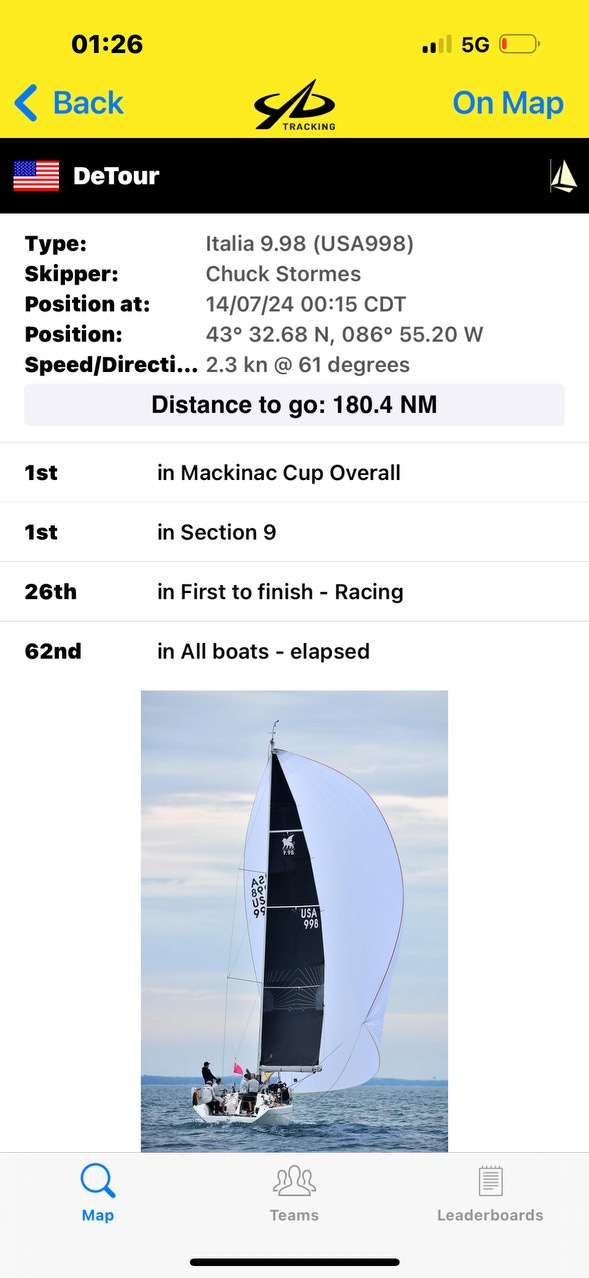
Early Monday, Prophit confirmed that Fast Tango won first in class against 11 competitors. They crossed the finish line in 41 hours, 59 minutes, 47 seconds elapsed time.
Chaos on other boats, too
Following the storm, 15- to 20-knot southerly winds continued to propel the 247-boat fleet north, Muma said in the race update.
While mast loss made headlines with sailing reporters, other boats had serious issues that went unreported. And they kept going, hoping for the best.
Mark DenUyl of Marysville, Michigan, owner and skipper of the 34.5-foot Good Lookin’, watched his carbon fiber bowsprit snap in half during the high winds right around 11:30 p.m. Saturday. Now it’s held together with electrical tape and sail tape.
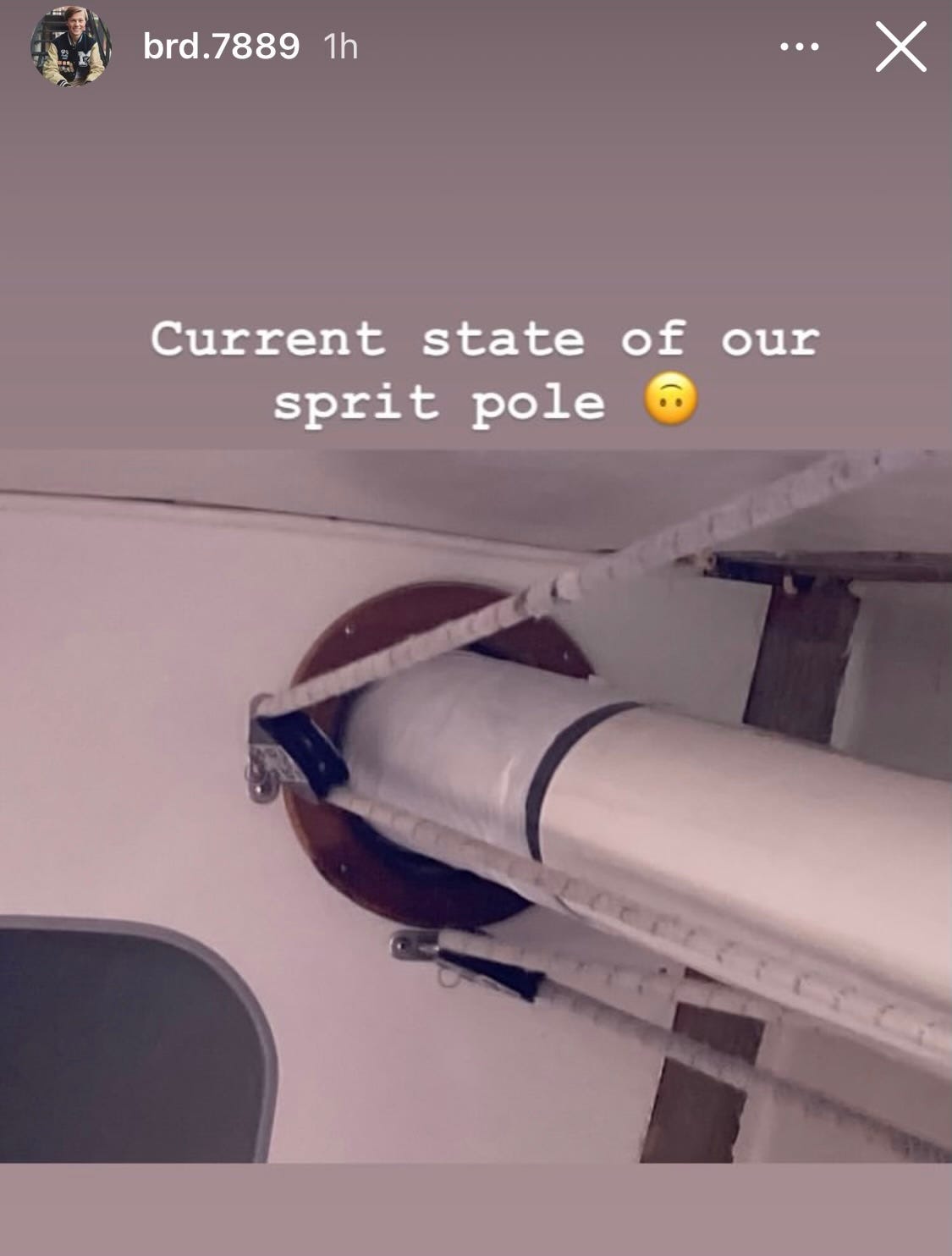
Crew member Brennan Churchill, 22, texted his dad at home in Kimball, Michigan, with an update on the damaged equipment used to extend the sail, so it captures more wind.
“He knew better than to tell his mother,” Tracy Heany Churchill said Sunday. “He knows I go into freakout mode.”
Ron Churchill always sails with his son, who won his first Mackinac race at age 15, but Ron couldn’t leave work as a senior operations manager for a natural gas storage facility to do both the Chicago and Port Huron races to Mackinac.
“I feel like I’m lost right now. I just feel like I’m supposed to be there,” Ron Churchill said Sunday.
Brennan described the boat tipping so far to one side that the crew was in waist-deep water, his father said. “Everybody stayed on the boat. Water was washing over them.”

The sudden gust of wind create such force that it likely flexed and snapped, he said. As a result of the damage, the crew held steady until daylight to try and figure out what to do, Churchill said. “They did a good job with just staying composed ad keeping the boat moving well.”
On Monday morning, Good Lookin’ crossed the finish line in third in class against a dozen other J/105 boats despite damage to critical equipment.
Cara DenUyl and her 19-year-old daughter, Riley, woke up at 5:30 a.m. on Monday to watch online the Good Lookin’ finish “It a nail biter. It was close between second and third. They were in second place at 2 a.m. Sunday, when that storm hit. Then they fell back all the way to seventh place. At the time, we didn’t know the storm had hit. Somehow they got everything fixed enough to keep going, thankfully. I feel relief that they made the podium.”
‘Breathtaking’ speed
With storms come great wind. Or, in sailor speak, great air.
Winn Soldani, race chair of the Chicago to Mackinac race, said this weekend’s storms brought “epic” conditions that weather models predicted, which is important for safety.
“We’re watching boats going 20 knots, or about 23 miles per hour, and it’s breathtaking,” Soldani told Shifting Gears from the finish line near the Mission Point hotel on Mackinac Island on Sunday.
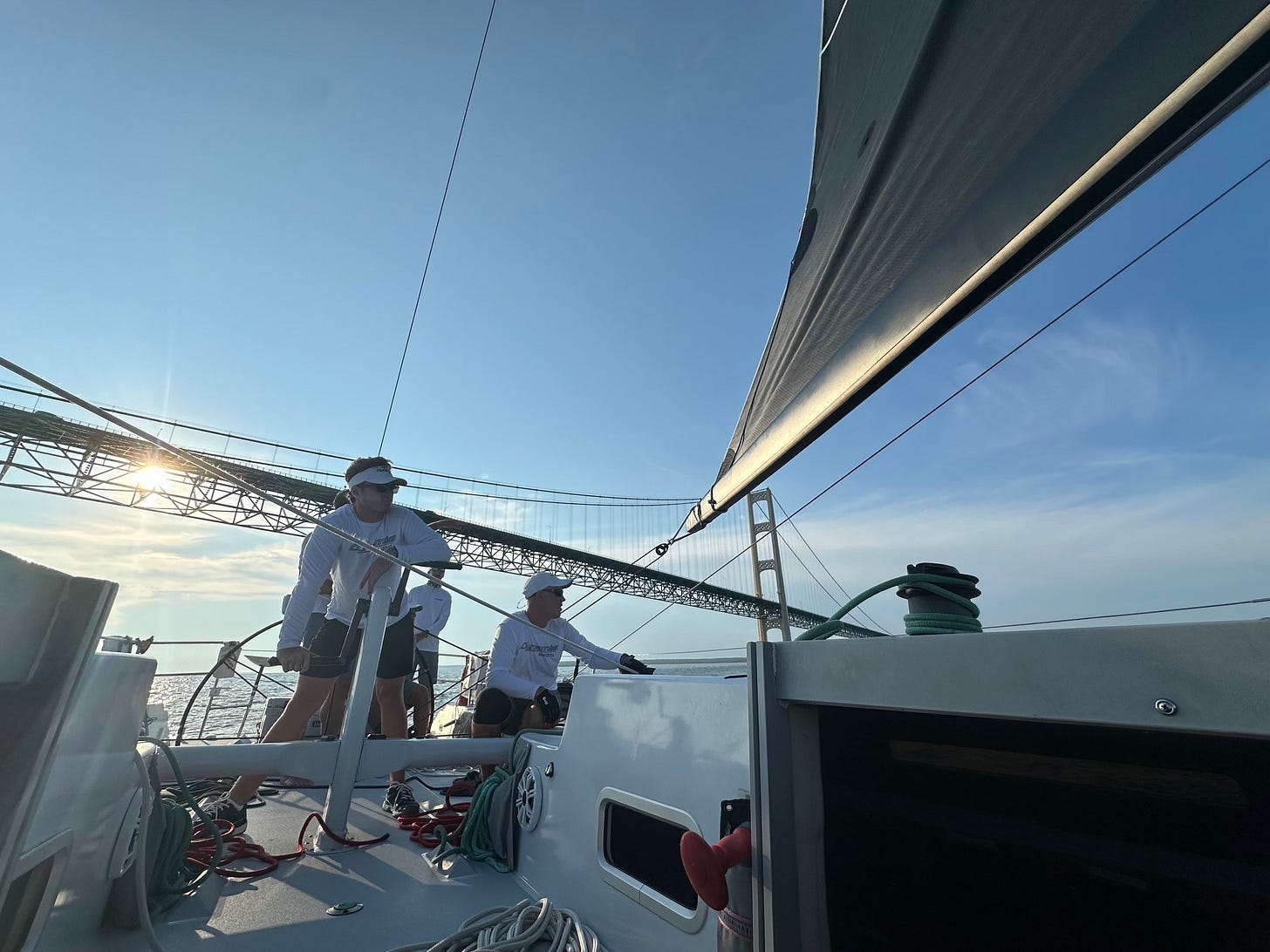
“When the squalls hit, the wind changed direction very rapidly, from out of the south to out of the west, at 33 to 35 miles per hour,” he said. “Some of these sails are the size of tennis courts. They’re huge. So this changes pressure on the mast.”
That’s what causes masts to snap, Soldani said. Strict safety protocols protect the 2,200 sailors racing this year, and that’s why they’re required to wear special tracking devices on their bodies at all times.
Storm winds create record-setting conditions
As a result of the strong winds, this race broke the speed record.
The 80-foot Maverick finished in 22 hours, 24 minutes, 23 seconds, breaking a record set 22 years ago by 66 minutes, 11 seconds.
Sanford Burris of Kirtland, Ohio, sailed with his sons and friends on the carbon fiber Andrews 80 they have spent the past three years upgrading, according to Muma. The 20-person crew included Rodney Keenan, founder of Evolution Sails.
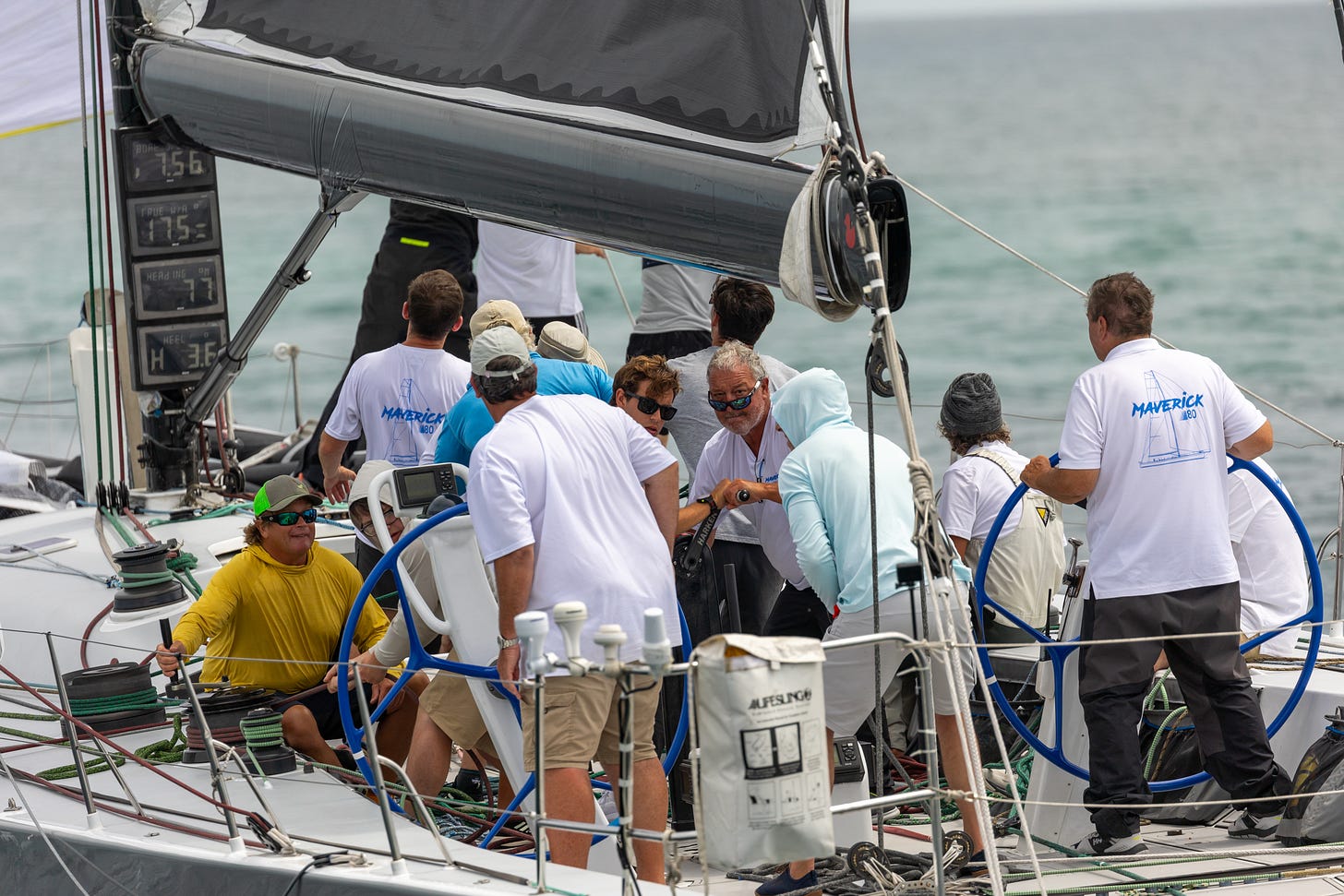
“The team celebrated briefly as the Maverick team crossed the Race to Mackinac finish line between Mackinac Island and the Round Island lighthouse … and then kept on sailing,” said the Chicago to Mackinac news release.
Maverick is one of 25 sailboats registered for this year’s “Super Mac” race, a combination of the Chicago Mackinac and the Bayview Mackinac races, which means they will continue into Lake Huron, heading south to Port Huron, for a total of 565 statute miles (495 nautical miles).
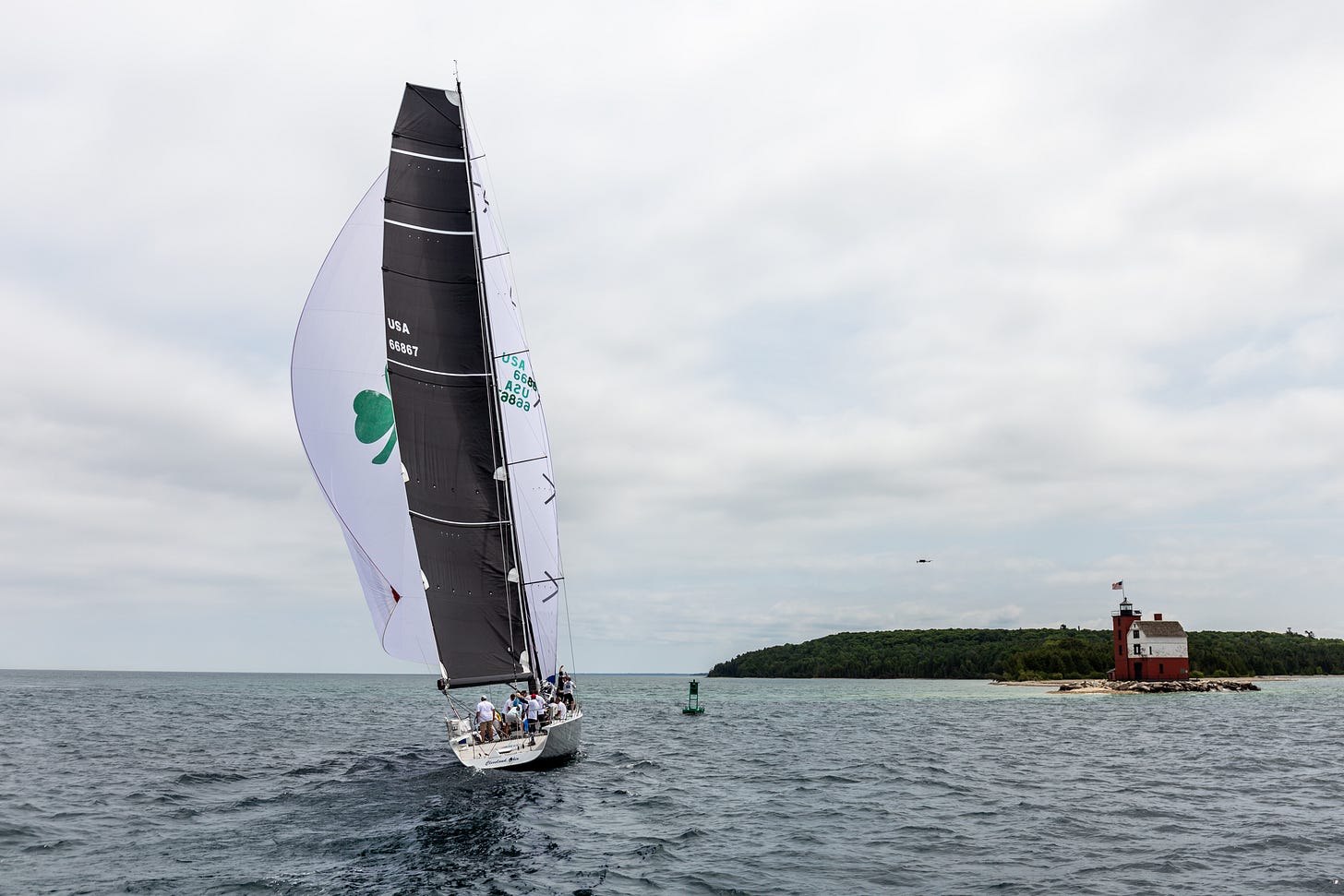
Note: Phoebe Wall Howard covered sailing for the Detroit Free Press, and she has been going to Mackinac Island to meet her father at the finish line since age 12. Robert Wall of Algonac, Michigan, won his last Port Huron to Mackinac race on Chippewa, a Tartan 34C, in 2014 at age 85. Phoebe’s husband usually races on Good Lookin’ but he is not competing this year.
A special shoutout to the Iowa Writers Collaborative, which invited me to join substack and has supported me every step of the way. The family of writers, with whom I worked as a political reporter at The Des Moines Register, is made up of incredibly smart and interesting people. You’ll love the stories.





Wow! These sailors will have sea stories to tell while they’re sharing their Dark and Stormys. To put the dismanting in perspective, the masts on those big boats are as tall or taller as more than two-thirds the length of an NBA basketball court, or slightly longer than the distance from the pitcher’s mound to home plate at Wrigley Field. In those seas the wreckage is very hard to handle in the dark from a pitching deck!
Been there, done that. I worked the foredeck on a 37 foot boat for 20 years. Looking back, the storms were actually fun. I have hoped for lightening at times just so I could see what I was doing. Takes a special person to do this, but as I say, it was fun. Most of the macs are not like this